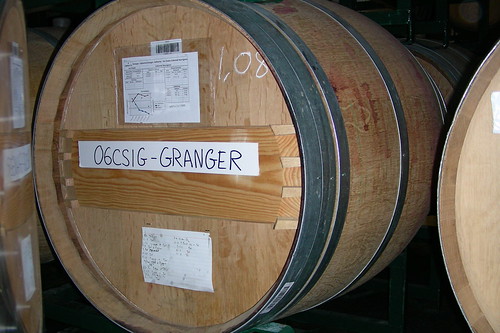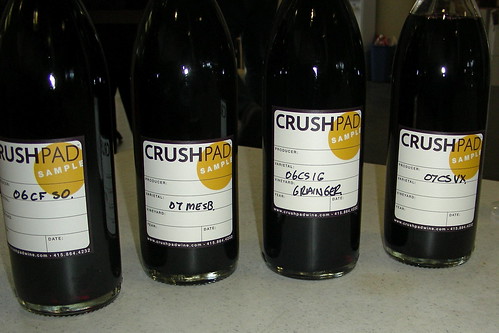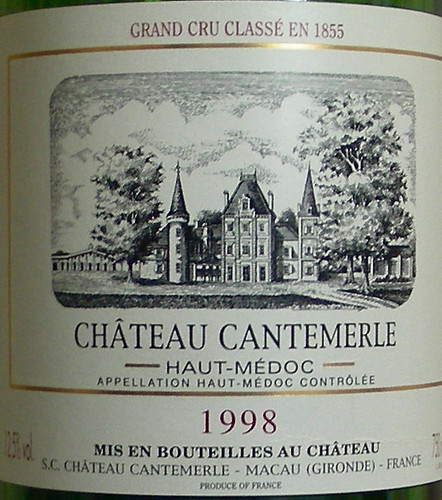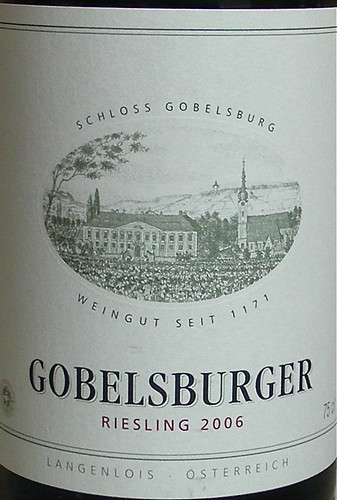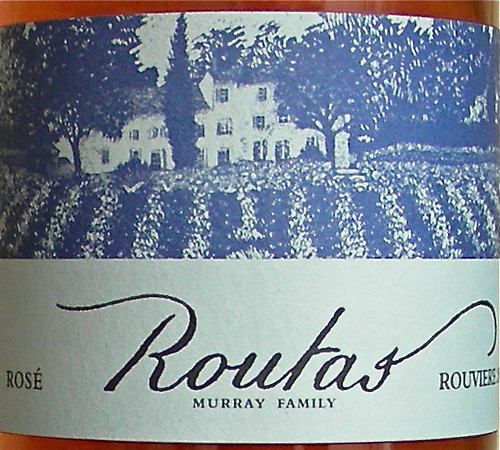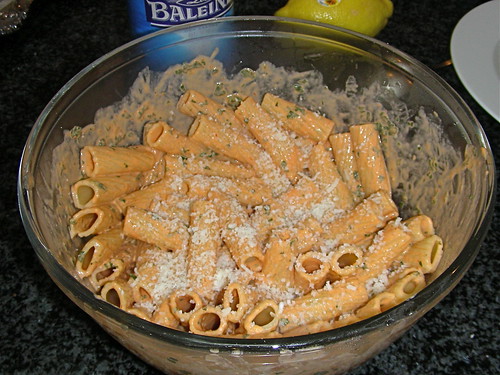Which wine goes better with which cheese? Is red wine better than white white, dry wine better than sweet wine? These were some of the questions we were asking ourselves at our last wine club tasting party where the topic was wine and cheese pairing. In order to identify the pairings that worked well, we had four different kinds of cheese, each being paired with two different wines (for example a white and a red). At the end of the party, not too surprisingly, there was no single good answer, not a clear set of rules, just a wide range of personal tastes and opinions.
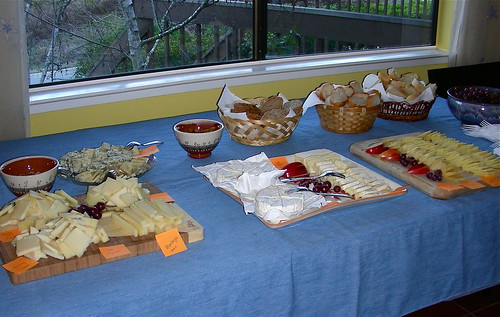
Here is what we tasted:
First cheese platter, hard cheese from the Alps made from cow's milk:
Gruyère from Switzerland,
Comté from Franche-Comte, and
Beaufort from Savoie.
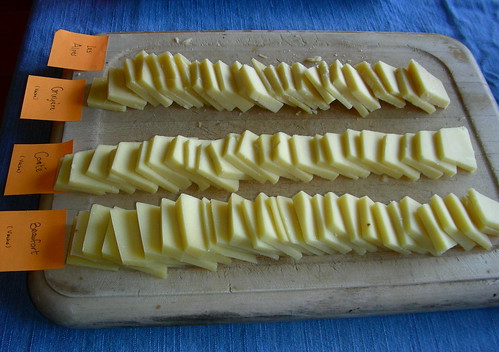
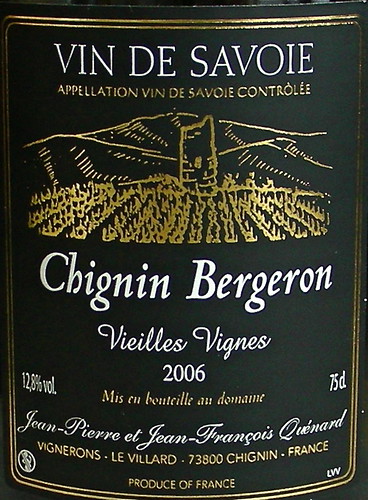
•
2006 Chignin-Bergeron Vieilles Vignes Domaine Jean-Pierre et Jean-François Quénard:
Domaine Jean-Pierre et Jean-François Quénard is a 15 hectares estate near the village of Chignin in Savoie. Bergeron is the local name for Roussanne. The Vieilles Vignes cuvée comes from low-yield Roussanne vines that are at least 40 years old. My notes: golden color, sweet, fruity nose of apple and apricots, medium-bodied on the palate. Worked really well with the nutty flavors of the Beaufort.

•
2006 Vin de Savoie Arbin Charles Trosset L'Expression d'un Terroir: Domaine Charles Trosset is located in Arbin, not very far from Chignin. The domaine relies on a single grape, Mondeuse, which is
the red grape of Savoie and also called Refosco in Northern Italy. The grapes are grown on steep slopes, with limestone and clay soils. My notes: garnet color, red fruit nose, light to medium bodied on the palate, some acidity, peppery finish. I personally enjoyed the light and fruity character of the wine with the cheese but some others were not too crazy about it.
Second cheese platter, soft cheese from Normandy made from cow's milk:
Camembert and
Pont-l'Évêque.
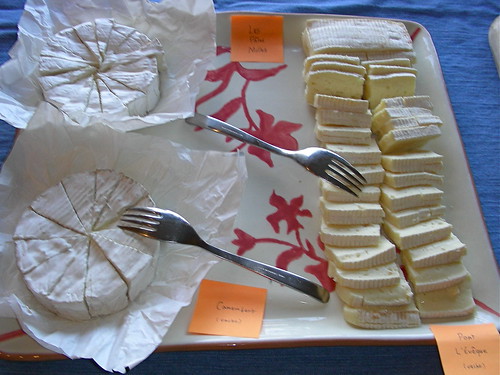
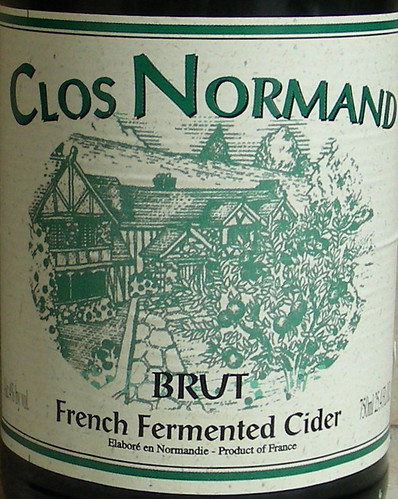
•
Cidre Brut Clos Normand: Cidre with cheese! Many tasters could not believe this was possible. But if you think about it, this makes sense. Both Cidre and Camembert come from Normandy, and Cidre is certainly one of the most popular drinks in the region. My notes: The rich, creaminess of the Camembert calls for fruity white wines and in my opinion, it worked pretty well with the cider, although I would have preferred a non pasteurized, drier cider. The rest of the group was almost split in half: some loved it with the cheese, the others hated it.
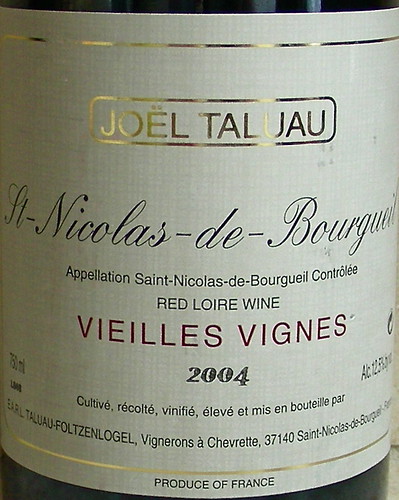
•
2004 Saint-Nicolas-de-Bourgueil Vieilles Vignes Joël Taluau: the
Domaine Joël Taluau has 26 hectares of vines in the
Saint-Nicolas-de-Bourgueil appellation in the Loire Valley. The cuvée Vieilles Vignes is the flagship cuvée and comes from Cabernet Franc vines which are more than 35 years of age, some planted in 1934. My notes: bright garnet color, red berries on the nose, medium-bodied and good acidity on the palate, well balanced, spicy finish. Overall, a pretty popular wine. For me, this is the kind of red wine — fruity, not too tannic — that goes well with soft cheese.
Third cheese platter: semi-firm cheese from Spain and the Pyrenees, made from sheep's milk:
Manchego from La Mancha,
P'tit Basque from the Pyrenees,
Etorki from the Pays Basque, and
Ossau Iraty also from the Pays Basque.

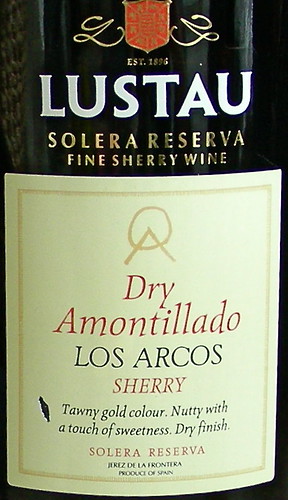
•
Emilio Lustau Dry Amontillado Los Arcos:
Amontillado is a variety of sherry which is slowly oxydized through the slightly porous oak casks and thus gains with time a rich amber color. In Spain, the wine is traditionally served as an aperitif with olives, almonds, and cheese; My notes: although sherry is a traditional partner for Manchego, the room was split again on the wine. Sherry, with its rich nutty aromas, is definitively an acquired taste. As for me, the Amontillado Los Arcos is one of my favorite wines. Deep amber color, rich, luscious nose, bone-dry and nutty on the palate, and wonderful with the Manchego!

•
2005 Bodegas Conde Neo Sentido Ribera del Duero:
Bodegas Conde is a relatively new winery in the
Ribera del Duero appellation. The wine is made from Tempranillo vines that are over 50 years old. It is aged 6 months in one or two-year old casks made from American and French oak. My notes: dark color, nose of vanilla and black berry, rich, full-bodied on the palate. The wine was extremely popular and excellent with the Manchego and P'tit Basque.
Last cheese platter, blue cheese:
Fourme d'Ambert, a cow's milk cheese from Auvergne, and
Roquefort, a sheep's milk from the Cévennes.
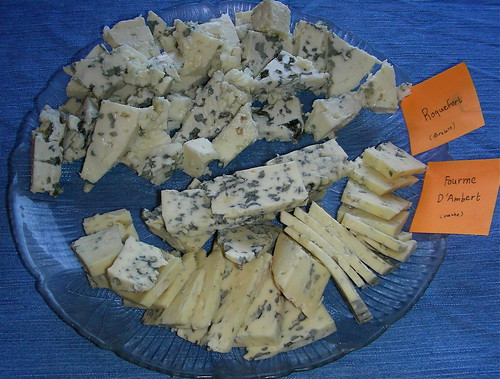
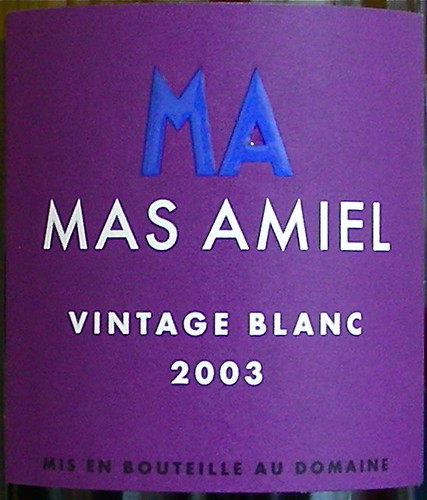
•
2003 Maury Vintage Blanc Mas Amiel:
Mas Amiel is the leading independent producer in the
Maury appellation, between the Mediterranean coast and the Pyrenees. The wine is fortified and made from old low-yield Grenache Gris vines growing on schistous slopes. My notes: bright color, mineral nose with notes of dried fruit, light-bodied and crisp on the palate with just the right amount of sweetness. It actually worked really well with the Fourme, a cow's milk cheese that is fatter than the Roquefort.
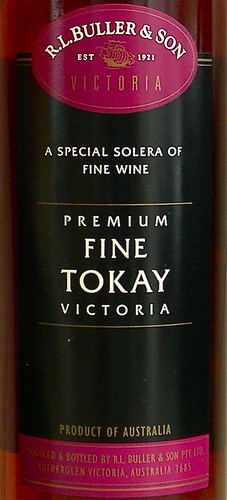
•
Buller Premium Fine Tokay:
R.L. Buller is one of the quality leaders in the production of fortified wines from the warm region of
Rutherglen in Victoria, Australia. My notes: amber color, orange marmalade and quince on the nose, extremely sweet, creamy palate with a nutty moka finish. In general, blue cheese, because of their saltiness, partner best with sweet wines but this one was much too sirupy and cloying for most of the guests. Retrospectively, I think that a Tokay from Hungary would have been better with a Roquefort.
Our next tasting event will feature a blind tasting like the
one we had last year. This was a challenging but rewarding exercise and a lot of fun! This time, I promise, the wines I am going to choose will be easier to identify.
Previous wine club tastings:
•
Champagne Tasting•
Tasting the wines of South America•
Tasting Summer Wines from around the Mediterranean SeaTechnorati tags:: wine food & drink
